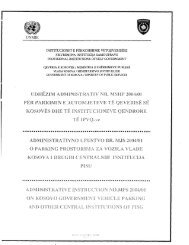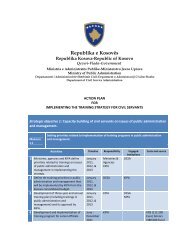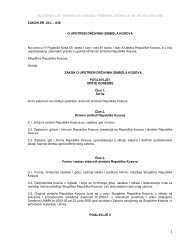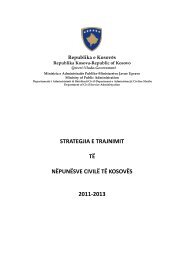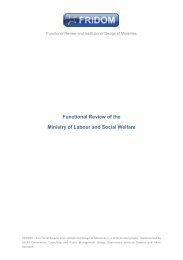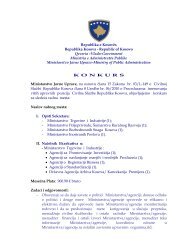Download
Download
Download
Create successful ePaper yourself
Turn your PDF publications into a flip-book with our unique Google optimized e-Paper software.
information to undertake further work on aligning the staffing arrangements to the budget and<br />
assessing the costs of the proposed changes. The work on the Institutional Development Plan<br />
should involve breaking the budget down to smaller cost centres to make it clearer what costs are<br />
related to various functions and what the fiscal costs to the budget are for the proposed changes.<br />
Positions reporting to the Permanent Secretary<br />
The PS has around 28-30 direct reporting positions with many of these being corporate services and<br />
providers of health services to the public. This suggests that the PS is at risk of being overwhelmed<br />
by provider issues and corporate issues, with little space to focus on the core functions of the<br />
ministry in terms of planning, policy, regulation, monitoring and review. The MOH needs to be<br />
providing strategic leadership in the sector, but this may be compromised by the reporting<br />
arrangements in relation to the PS. A more common range is around eight to ten including the<br />
support staff. The options for reducing this number of reports are discussed in this report.<br />
The corporate functions reporting to the PS are identified below, with options suggested for changing<br />
these. In contrast to the high profile that many corporate service functions have, key health policy,<br />
planning, monitoring and review functions lack a high profile in the structure of the MOH. The policy,<br />
planning, and review functions for public health, primary health, mental health, and secondary and<br />
tertiary services are all located under one director, along with the role of monitoring the hospitals.<br />
This causes many problems related to a lack of adequate representation for these functions at a high<br />
level in the ministry. 4 It also overloads the Director of the Health Services Department according to<br />
comments from staff. It potentially overloads the vacant position of the head of the Division of Health<br />
Services as this position has the Office for Hospital Institutions (vacant) and the Office for Primary<br />
Health Care.<br />
The Permanent Secretary has 13 agencies (institutions) reporting to this position, covering most<br />
hospital services. The reporting involves more than just exercising the role of appointment and<br />
management of the executive director of the agencies. In some cases it extends to receiving the<br />
performance reports of these agencies and dealing in some detail with their issues. There is an<br />
Office for Hospital Institutions under the Department of Health Services that is vacant and is not<br />
being filled. This situation of many direct reports by agencies to the PS and a lack of an oversight<br />
function elsewhere in the ministry, coupled with weaknesses in the accountability framework for the<br />
agencies are discussed in section VI.<br />
The options for reorganising the corporate functions, lifting the profile of core MOH services, and<br />
improving the arrangement for the agencies is discussed in the sections that follow.<br />
SECTION IV: Corporate functions<br />
The corporate functions located at the level of reporting to the PS are discussed below.<br />
Legal Department: An administrative instruction from the Office of the Prime Minister requires this<br />
office to be designated as a department. This department has five staff including the Director of the<br />
Department, with other positions required by the PMO administrative instruction, but which the MOH<br />
is not filling due to other priorities (as at April 2009). The Department focuses on legal aspects of<br />
administrative instructions and draft laws. It does not provide advice on legal matters relating to<br />
contracting, procurement, or personnel, nor does it represent the MOH in legal proceedings as this is<br />
a Ministry of Justice role. Consideration should be given to revoking the PMO instruction as it<br />
presumes all ministries will be well served by having a predetermined level of legal resources and<br />
that they should be delivered through specified jobs. This is proving not to be the case in the MOH,<br />
where under a budget constraint, the MOH has identified other priorities. To maximise the use of the<br />
legal resources, consideration could be given to changing the structure and roles. For example the<br />
Department could be a unit under a Corporate Services Department where it could be located with<br />
4 Hospitals report to the PS. This is discussed later in this report, including an option to have this reporting relate to high<br />
level matters only with other areas of the MOH dealing with the function of monitoring hospitals.<br />
12



